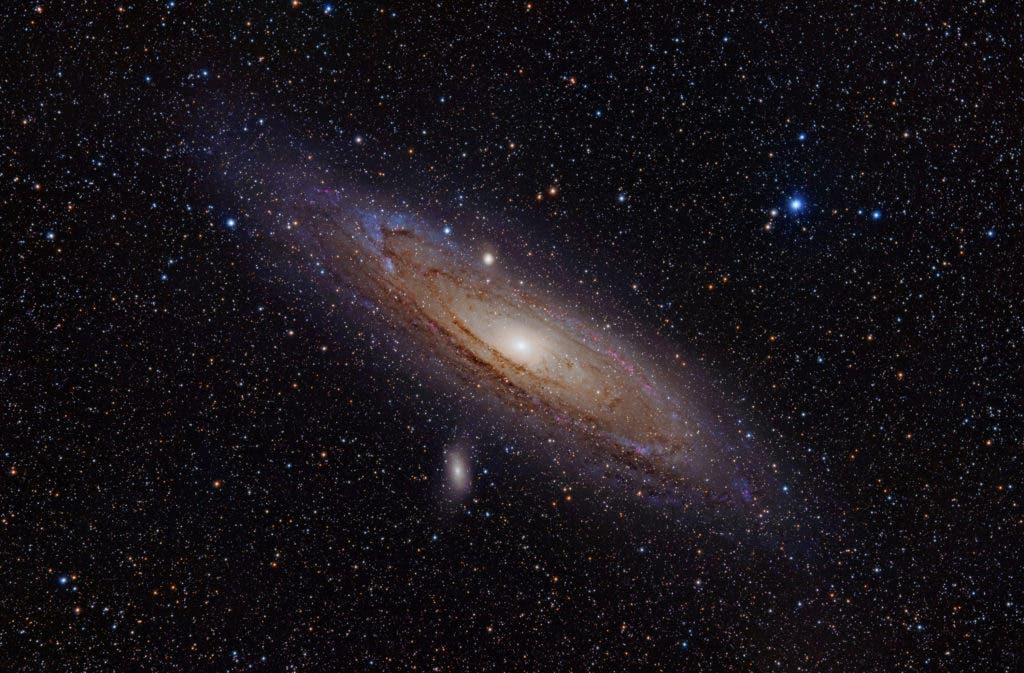
Billions of years ago, the Milky Way once had a huge sister galaxy, according to a surprising new study. Astronomers found that this long-lost sibling was devoured by the Andromeda galaxy, the largest galaxy in the Local Group and our closest galactic neighbor — and we’re next!
“Astronomers have been studying the Local Group — the Milky Way, Andromeda and their companions — for so long,” study co-author Eric Bell, a professor of astronomy at the University of Michigan (UM), said in a statement. “It was shocking to realize that the Milky Way had a large sibling, and we never knew about it.”
Androdema, also known as M32, is considered to be the largest galaxy in a group of 54 galaxies, which astronomers refer to as the Local Group. However, a recent study published this year, which used a new tool to measure the galaxy, suggests that Andromeda is about the same size as the Milky Way, which is traditionally seen as the second largest in the galaxy group.
In any event, Andromeda is huge — and it didn’t reach its king-sized status by accident. Astronomers think that during its rich history, Andromeda has collided, shredded, and appropriated hundreds of smaller galaxies.
It’s almost impossible to discern what happened to each of these lost galaxies. However, Bell and colleagues were lucky — they found that a faint halo of stars in the outer reaches of Andromeda mostly got there as a result of the shredding of a single large galaxy. Simulations that backtrack the collision in time suggest that about two billion years ago Andromeda must have merged with the onetime third-biggest member of the Local Group. The timing seems right too — a team of French researchers independently determined earlier this year that Andromeda likely underwent an important merger between 1.8 billion and 3 billion years ago.
“It was a ‘eureka’ moment. We realized we could use this information of Andromeda’s outer stellar halo to infer the properties of the largest of these shredded galaxies,” said lead author Richard D’Souza, a postdoctoral researcher at UM.
This galaxy, called M32p, which was shredded by the Andromeda galaxy, was at least 20 times larger than any galaxy which merged with the Milky Way over the course of its lifetime. M32p must have been massive, possibly once being at some point the third largest galaxy in the Local Group after the Andromeda and the Milky Way galaxies.
The devoured galaxy, called M32p, isn’t entirely gone. Instead, the astronomers think that Andromeda’s enigmatic M32 satellite galaxy is actually the surviving center of the Milky Way’s long-lost sibling — the remnants of a galactic corpse. Previously, scientists had no clue how M32, with its many contradictory features, could have surfaced. M32 is the smallest galaxy in the Messier catalog: just 6,500 light years across, with ~3 billion solar masses of material.
“M32 is a weirdo,” Bell continued. “While it looks like a compact example of an old, elliptical galaxy, it actually has lots of young stars. It’s one of the most compact galaxies in the universe. There isn’t another galaxy like it.”
The findings will help scientists improve their basic understanding of how galaxies form and evolve. For instance, it was previously thought that huge, dramatic crashes destroy the disks of spiral galaxies, turning them into the boring elliptical variety. However, Andromeda still retains its spiral shape, showing that this assertion is no rule.
“The Andromeda Galaxy, with a spectacular burst of star formation, would have looked so different 2 billion years ago,” Bell said. “When I was at graduate school, I was told that understanding how the Andromeda Galaxy and its satellite galaxy M32 formed would go a long way towards unraveling the mysteries of galaxy formation.”
Perhaps most importantly, the Andromeda-M32p collision will teach us what to expect from the galactic cannibal when it will have a taste of its largest meal yet — the Milky Way. The two galaxies will likely collide four billion years from now in an epic clash of the titans that will light the sky in other worlds that are far away enough from the mayhem.

The findings were reported in the journal Nature Astronomy.


